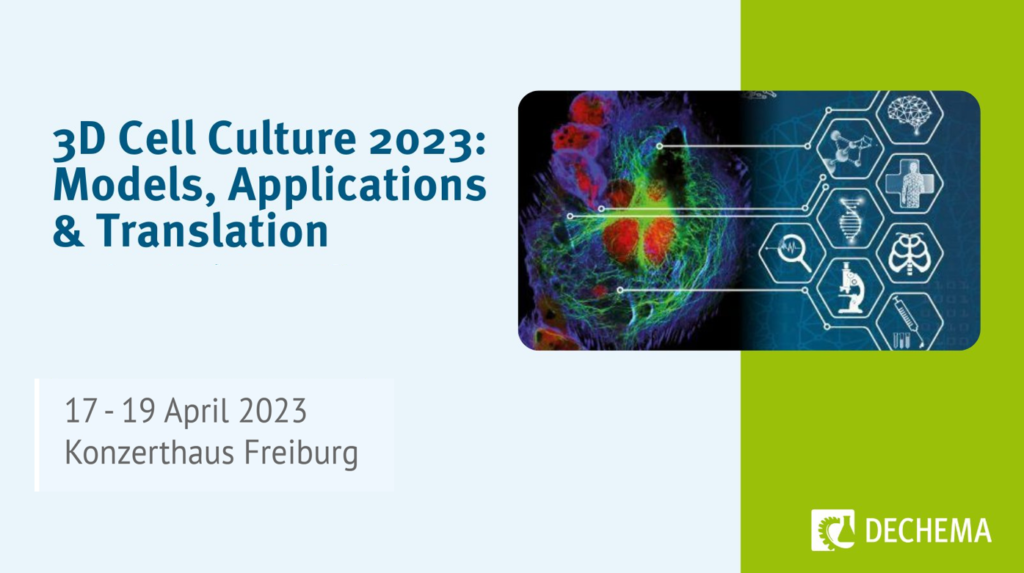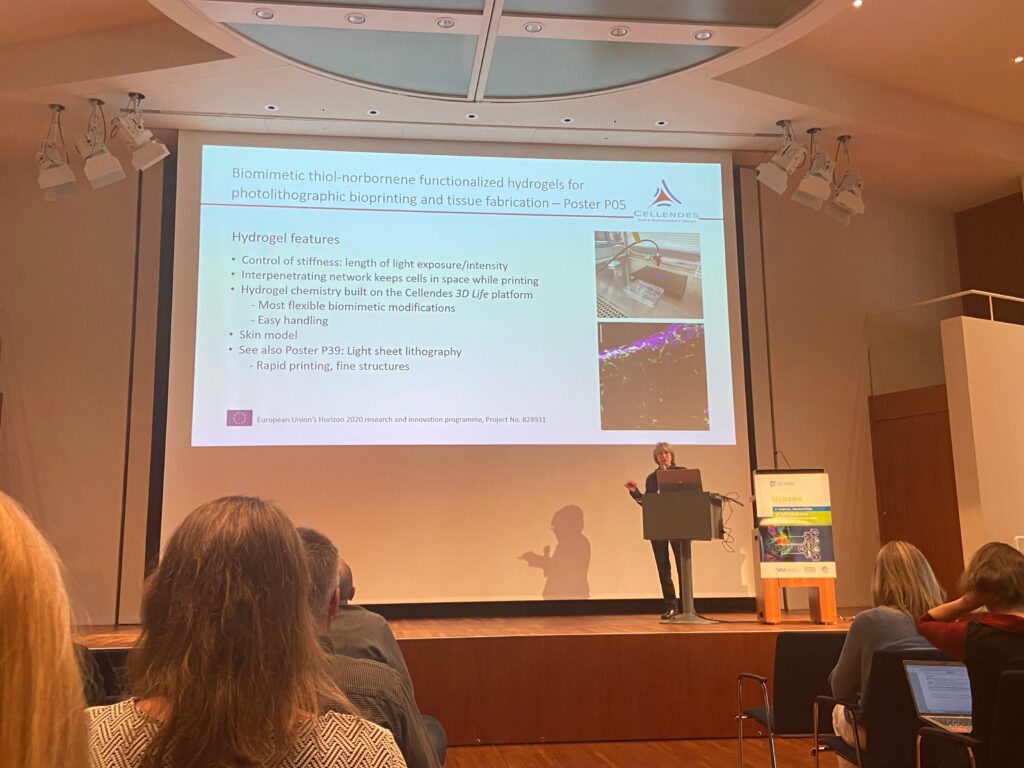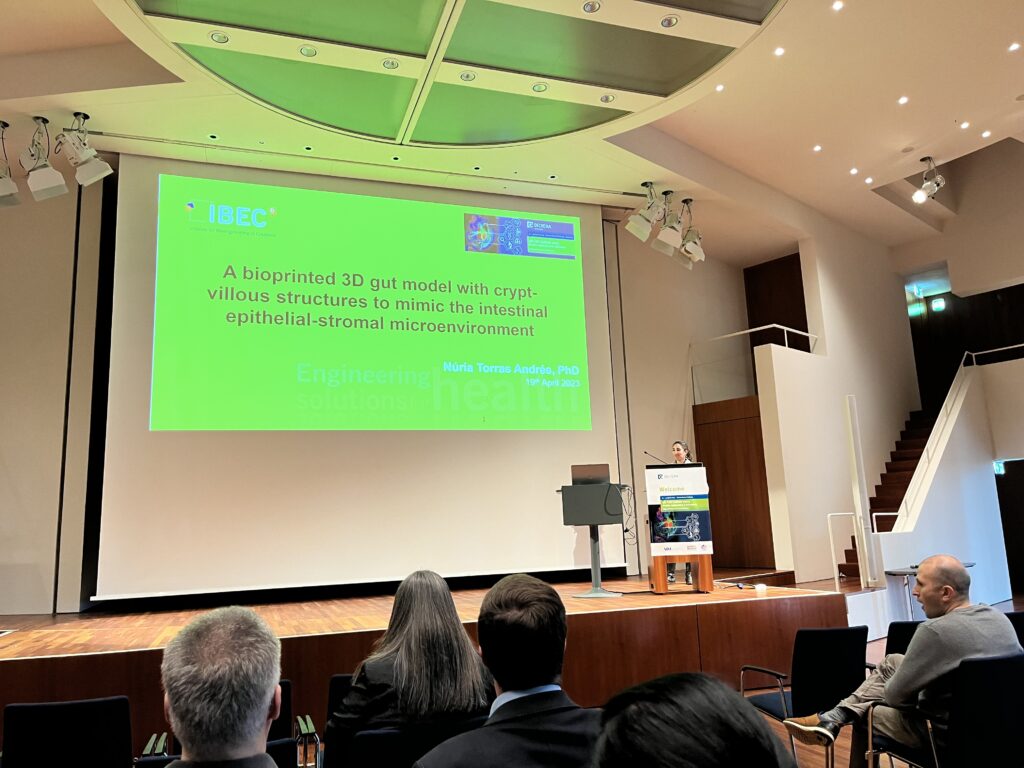B-BRIGHTER project had a notable participation at the last 3D Cell Culture Conference: Models, Applications & Translation, with two talks and two posters explaining the rationale behind the project and the latest advances. The emphasis of this year’s meeting was on advanced and predictive 3D cell culture models.

Last 17-19 April, Cellendes, Goethe University Frankfurt (GUF) and the Institute of Bioengineering of Catalonia (IBEC), brought to light B-BRIGHTER project to the assistants of the 7th 3D Cell Culture Conference, held at Freiburg, Germany. The 3D Cell Culture Conference (3DCC) is an initiative of DECHEMA, a non-profit professional society which promotes scientific and technical exchange among experts from different disciplines, organizations and generations, concretely, it is organized by the working groups “Cell Culture Technology” and “Medical Biotechnology”.
The main topics of the 7th edition of the 3DCC series were the latest tendencies in development, biology and applications of organoids, the biology in microphysiological systems, new developments in the field of personalised medicine, the path from 3D cell cultures to cell-based therapies, as well as enabling technologies for standardisation and scalability.

The participation of B-BRIGHTER Project began with an oral presentation by Brigitte Angres, from Cellendes, where she talked about “Biomimetic thiol-norbonene functionalized hydrogels for photolithographic bioprinting and tissue fabrication”. The work was also presented in a poster format.
Afterwards, Levin Hafa from GUF presented a poster entitled “Bioprinting by light sheet lithography: engineering complex tissues with high resolution at high speed” explaining the project in depth and highlighting its objectives, advantages and originalities.


Finally, Nuria Torras, from IBEC talked about “A bioprinted 3D gut model with crypt-villous structures to mimic the intestinal epithelial-stromal microenvironment”, reporting a simple 3D bioprinting approach for the direct fabrication of advanced cell-laden tissue constructs by means of visible-light photopolymerization, which allows the fabrication of cell-laden structures resembling the intestinal mucosa in a single printing step.
In addition to the scientific presentations, the meeting spotlighted practical applications, products, and solutions, triggering engaging conversations among researchers, solution providers, and users.
